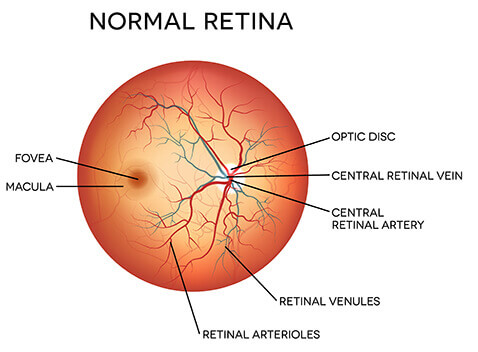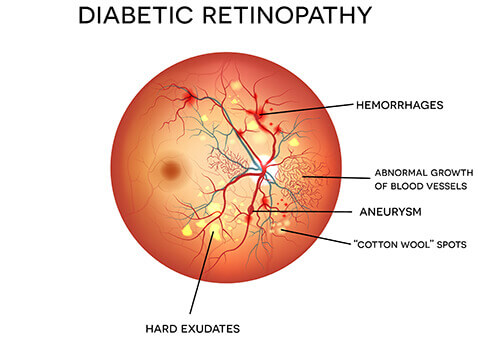Diabetic Eye Disease Management
If you have diabetes, you may already be aware of how this autoimmune disease can affect the rest of your body. Diabetics are susceptible to many different conditions and diseases. Your eyes can be greatly affected by uncontrolled diabetes. One common disease diabetics often deal with is called diabetic retinopathy.
What is Diabetic Retinopathy?
Diabetic retinopathy occurs when high blood sugar levels cause damage to blood vessels in the retina. As a result, these tiny blood vessels begin to swell and leak fluid and blood. They can also close off completely, not allowing blood to flow through. As the disease progresses, abnormal blood vessels begin to grow on the retina. Diabetic retinopathy can cause vision loss.
Stages of Diabetic Retinopathy
There are two main stages associated with diabetic retinopathy.
- NPDR (non-proliferative diabetic retinopathy): During this stage, tiny retinal blood vessels swell and leak. This can cause the retina to swell, leading to macular edema. This can cause vision loss.
- PDR (proliferative diabetic retinopathy): During this advanced stage, the retina begins to grow new, abnormal blood vessels. These new blood vessels are unstable and leak more easily, causing severe vision loss.
Symptoms of Diabetic Retinopathy
The early stages of diabetic retinopathy are usually not noticeable. As the disease progresses, symptoms can include:
- Fluctuating vision
- An increase in floaters (specks in the visual field)
- Dark spots in vision
- Dull color vision and poor night vision
- Eventually, vision loss can be noticed
If you experience any of these symptoms, be sure to contact your ophthalmologist as soon as possible.
Diagnosis
In order to diagnose diabetic retinopathy, your eye doctor will dilate your eyes. After your eyes are fully dilated, they will use a special lens to look into your eye. They may also use a special type of dye to see your retina more clearly.
Treatments
Once diagnosed, your eye doctor will determine which treatment method is best for you. These treatment methods include:
- Controlling your blood sugar. This method is great for those in the very early stages of diabetic retinopathy as it can help you avoid vision loss. Your doctor will advise you to control your blood sugar no matter how far progressed your diabetic retinopathy is.
- Medicine. Anti-VEGF injections can help curb the growth of new, abnormal blood vessels and reduce macular swelling.
- Laser Surgery. Laser surgery can be used to seal off leaking blood vessels. This treatment can also shrink blood vessels and prevent the growth of new ones.
- Vitrectomy. Patients with advanced PDR may need what is called a vitrectomy. During a vitrectomy, your surgeon will remove parts of the vitreous gel (the substance located in the middle of the eye.) Doing this can restore vision by removing the fluid and blood that has leaked into the eye. Scar tissue may also be removed from the retina.
Diabetic Eye Disease Treatment
Related Pages


